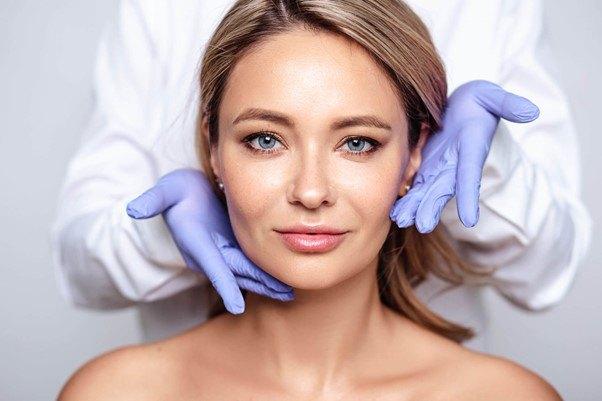
Discover everything you need to know about Botox in this ultimate guide.
The Ultimate Guide to Botox: Everything You Need to Know
Botox has become a popular cosmetic treatment in recent years, but what exactly is it and how does it work? In this comprehensive guide, we will take a closer look at Botox, its benefits, the procedure itself, potential side effects, and debunk some common misconceptions. Whether you are considering getting Botox or simply want to learn more about it, this guide has got you covered.
Understanding Botox: A Comprehensive Overview
When it comes to cosmetic procedures, Botox has become a household name. But what exactly is Botox and how does it work its magic? Let’s dive into the fascinating world of this neurotoxic protein and explore its science and applications.
What is Botox?
Botox, short for botulinum toxin, is a neurotoxic protein produced by the bacterium Clostridium botulinum. This bacterium is commonly found in soil, lakes, and forests. While it may sound alarming, the controlled and purified form of Botox has been safely used for various purposes for many years.
Initially, Botox gained popularity as a cosmetic treatment for reducing the appearance of wrinkles and fine lines. However, its applications have expanded to include medical treatments for various conditions. When injected into specific areas, Botox works its magic by temporarily paralyzing or weakening the muscles. By doing so, it effectively reduces the appearance of wrinkles and fine lines, giving the skin a smoother and more youthful look.
But Botox is not just limited to cosmetic enhancements; it also has numerous medical applications. Medical professionals use Botox to treat a variety of conditions, including chronic migraines, excessive sweating (hyperhidrosis), muscle spasms, overactive bladder, and even certain eye disorders. The versatility of Botox makes it a valuable tool in the medical field.
The Science Behind Botox
Now that we have a basic understanding of what Botox is and its applications, let’s delve into the science behind this remarkable substance.
Botox works by blocking nerve signals in the muscles, preventing them from contracting. The main ingredient in Botox, botulinum toxin type A, is a powerful neurotoxin that inhibits the release of acetylcholine, a neurotransmitter responsible for muscle contraction. When Botox is injected into specific muscles, it binds to the nerve endings, preventing the release of acetylcholine. Without this neurotransmitter, the muscles are unable to contract as forcefully as before. This results in a temporary relaxation of the muscles, smoothing out wrinkles and softening facial expressions.
It’s important to note that the effects of Botox are not permanent. Over time, the body naturally metabolizes the toxin, and the muscles regain their normal function. This is why Botox treatments need to be repeated periodically to maintain the desired results.
While Botox is generally safe when administered by a qualified professional, it’s crucial to consult with a medical expert before undergoing any cosmetic or medical procedure. They will assess your individual needs and determine if Botox is the right option for you. So, whether you’re considering Botox for cosmetic purposes or exploring its medical applications, understanding the science behind this remarkable substance can help you make informed decisions about your health and well-being.
The Benefits of Botox
Botox, also known as botulinum toxin, is a popular cosmetic treatment that offers a range of benefits. Not only does it help reduce the appearance of wrinkles, but it also has various medical applications. Let’s explore the cosmetic and medical benefits of Botox in more detail.
Cosmetic Benefits of Botox
One of the primary reasons people opt for Botox is its ability to reduce the appearance of wrinkles. Botox injections can effectively minimize crow’s feet, forehead lines, and frown lines, giving the face a smoother and more youthful appearance. But Botox’s cosmetic benefits don’t stop there. It can also be used for non-surgical brow lifts, lip enhancements, and jawline contouring.
By strategically injecting Botox into specific facial muscles, a skilled practitioner can help reshape and redefine these areas, enhancing the overall facial aesthetics. Moreover, Botox can be a valuable tool in addressing asymmetry in the face. By selectively weakening certain muscles, Botox can help achieve a more balanced and harmonious facial appearance.

Medical Uses of Botox
Beyond its cosmetic benefits, Botox has numerous medical applications. It has revolutionized the treatment of various conditions, offering relief and improved quality of life for many patients.
One of the most well-known medical uses of Botox is in the treatment of chronic migraines. Botox injections can help reduce the frequency and severity of migraines, providing much-needed relief for those who suffer from this debilitating condition[1].
In addition, Botox is an effective treatment for excessive sweating, a condition known as hyperhidrosis. By blocking the signals that stimulate sweat glands, Botox can significantly reduce sweating in areas such as the underarms, palms, and soles of the feet[1].
Botox is also used to treat muscle spasms, particularly in the neck and eye areas. Conditions such as cervical dystonia and blepharospasm can cause involuntary muscle contractions, leading to pain and discomfort. Botox injections can help relax these muscles, alleviating symptoms and improving mobility[2].
Furthermore, Botox has proven to be a valuable treatment option for certain eye conditions. Strabismus, commonly known as crossed eyes, can be corrected with Botox injections. By weakening the overactive eye muscles, Botox can help realign the eyes and restore proper vision. Similarly, blepharospasm, characterized by uncontrollable eyelid spasms, can be effectively managed with Botox[2].
It’s important to note that Botox should only be administered by a qualified healthcare professional who has extensive experience with the treatment. A skilled practitioner will assess each individual’s unique needs and tailor the injections accordingly, ensuring optimal results and minimizing potential side effects.
In conclusion, Botox offers a range of benefits, both cosmetic and medical. Whether you’re looking to reduce wrinkles and enhance your appearance or seeking relief from chronic migraines and muscle spasms, Botox can be a valuable treatment option. Consult with a healthcare professional to determine if Botox is right for you.
The Botox Procedure: What to Expect
Pre-Procedure Consultation
Prior to receiving Botox injections, it is important to consult with a trained medical professional. During the consultation, they will discuss your goals, examine your facial muscles, and determine the appropriate injection sites. They will also explain the procedure in detail and address any concerns or questions you may have. It is important to disclose any medications you are currently taking, as well as any medical conditions you may have. This information will help the practitioner tailor the treatment to your specific needs and ensure your safety.
During the Procedure
The actual Botox procedure is quick and relatively painless. The practitioner will clean the injection sites with an antiseptic, and using a fine needle, inject small amounts of Botox into the targeted muscles. You may experience a slight pinch or stinging sensation, but it should be tolerable. Depending on the areas being treated, multiple injections may be required. The practitioner will carefully administer the injections to achieve natural-looking results and minimize any discomfort.
Post-Procedure Care
After the procedure, it is important to follow the post-procedure care instructions provided by your practitioner. This may include avoiding strenuous physical activity for a few hours, refraining from touching or rubbing the treated areas, and applying ice packs to reduce any swelling or bruising. Some patients may experience mild side effects, such as redness or tenderness at the injection sites, but these typically subside within a few days.
It is crucial to reach out to your practitioner if you have any concerns or if you experience any severe or prolonged side effects.
Potential Side Effects and Risks of Botox
Common Side Effects
While Botox is generally safe when administered by a qualified professional, there are some potential side effects to be aware of. Common side effects include temporary bruising, swelling, and mild pain at the injection sites. These side effects are usually short-lived and resolve on their own. It is important to note that everyone’s experience may vary, and some individuals may be more prone to certain side effects than others. Your practitioner will discuss any potential risks and side effects with you during the consultation process.
Serious Risks and Complications
Although rare, there are some serious risks and complications associated with Botox injections. These can include allergic reactions, muscle weakness or paralysis in unintended areas, and asymmetrical facial expressions. It is crucial to choose a qualified practitioner who has experience in administering Botox injections to minimize these risks. Additionally, following the aftercare instructions and seeking immediate medical attention if you experience any severe symptoms or side effects can help mitigate potential complications.
Debunking Botox Myths
Botox Myths vs Facts
There are several myths surrounding Botox that can cause confusion. Let’s take a moment to separate fact from fiction.
- Myth: Botox is only for older people.
Fact: Botox can be used as a preventative measure for younger individuals to slow down the formation of wrinkles. - Myth: Botox will completely freeze your face.
Fact: When administered correctly, Botox should not inhibit normal facial expressions but rather soften lines and wrinkles. - Myth: Botox is irreversible.
Fact: Botox is not permanent, and its effects typically last for about three to four months. If desired, you can discontinue Botox treatments, and your muscles will gradually return to their normal function.
Common Misconceptions about Botox
In addition to these myths, there are a few common misconceptions surrounding Botox that should be clarified.
Misconception: Botox is only used for cosmetic purposes.
Clarification: Botox has various medical applications and is widely used to treat several conditions, as mentioned earlier.
Misconception: Botox is a permanent solution.
Clarification: Botox is a temporary solution for reducing the appearance of wrinkles and treating certain conditions. Regular treatments are required to maintain the desired results.
Misconception: Botox is painful.
Clarification: While everyone’s pain threshold is different, Botox injections are generally well-tolerated and only cause minimal discomfort.
Now that we have debunked some of the common myths surrounding Botox, you can make informed decisions regarding its potential benefits and risks.
In conclusion, Botox is a versatile treatment used for both cosmetic and medical purposes. Its ability to reduce the appearance of wrinkles and treat various conditions has made it highly sought after. When considering Botox, it is crucial to consult with a qualified practitioner and weigh the potential benefits against the possible risks. By understanding the science behind Botox and debunking common myths, you can make informed decisions and achieve the desired results.
References:
Citations:
[1] https://www.nhs.uk/conditions/cosmetic-procedures/botox-injections/
[2] https://www.nhs.uk/conditions/cosmetic-procedures/botox-injections/
[3] https://www.ncbi.nlm.nih.gov/pmc/articles/PMC7291232/
[4] https://www.gov.uk/government/consultations/licensing-of-non-surgical-cosmetic-procedures/the-licensing-of-non-surgical-cosmetic-procedures-in-england
Author: Lee Pedlar, BSc, MSc, is the founder of Palm Springs Aesthetics, established in 2018. An Advanced Nurse Practitioner with over 16 years of healthcare experience, including work in the NHS, Lee holds a BSc in Nursing and an MSc in Advanced Clinical Practice. Specialising in anti-ageing injections and advanced dermal filler procedures for the face and lips, Lee is committed to helping clients achieve a natural, rejuvenated look. Palm Springs Aesthetics offers personalised, confidential services tailored to individual client needs at their Cardiff location

